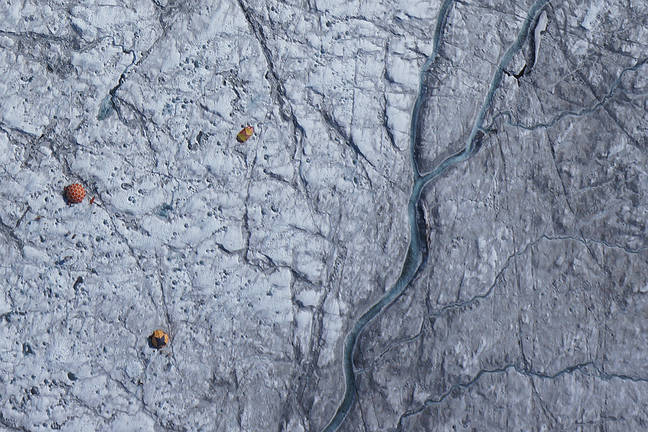SOURCE: Inside Climate News
DATE: April 19, 2018
SNIP: [T]emperatures are rising in the Arctic at about twice the global average. That causes melting around the edges of the ice sheet each year and reaches across more of the surface during summer heat waves.
In areas near the edge of the ice sheet, things get even more interesting: a carpet of microbes and algae mixed with dust and soot, a short-lived climate pollutant, is darkening the ice sheet, absorbing the sun’s rays and accelerating the melting of the ice.
New research shows this dark zone is growing.
The new research, published in the journal Nature Communications, describes a geological feedback loop on the ice that’s expanding the dark zone: Warming melts the western edge of the ice sheet, releasing mineral dust from rock crushed by the ice sheet thousands of years ago. That dust blows to the surface of the ice, nurturing the microbes and algae living there. Those organisms produce colored pigments as sunscreen, which contribute to the darkening of the surface, reducing reflectivity and increasing melting.
“Just the little bit of extra heat from a tiny soot particle can start transforming feathery and highly reflective snow crystals into darker, rounded grains that absorb more heat,” said climate researcher Jason Box.

